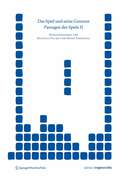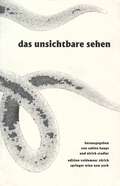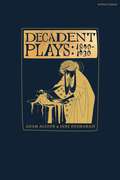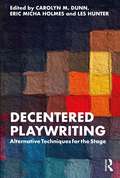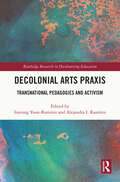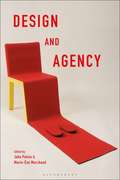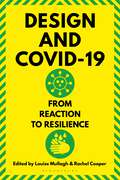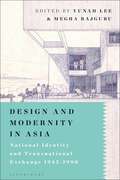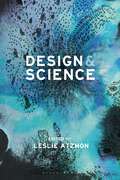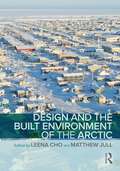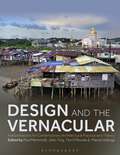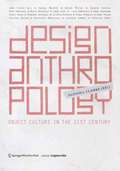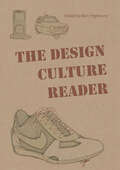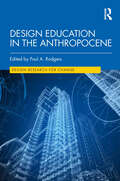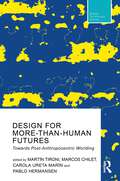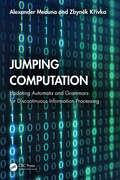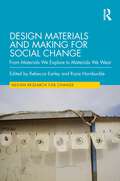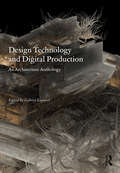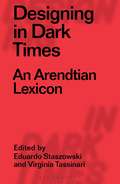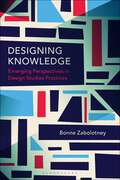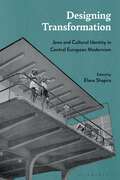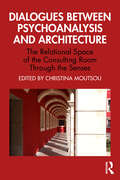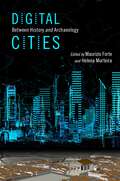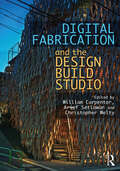- Table View
- List View
Das Spiel und seine Grenzen: Passagen des Spiels II (Edition Angewandte)
Spiel ist heute ins Zentrum der Kulturwissenschaften gerückt. In seinen Regeln, seinem Design und den Erzählungen, die es generiert, ist Spiel die Arena gesellschaftspolitischer und ästhetischer Konflikte und der ökonomisch bedeutendste Sektor der Freizeit- und Bewusstseinsindustrie der Gegenwart.Die Konjunktur des Spielbegriffs kennzeichnet den Übergang einer Erwerbs- und Leistungsgesellschaft zu einer Chancen- und Risikogesellschaft. Doch: Wer spielt? Wer gewinnt und wer verliert? Wer bestimmt die Regeln des Spiels?„Das Spiel und seine Grenzen" untersucht kritisch die Struktur und Grenzen des Spiels in der Kunst, Philosophie, Kulturindustrie und Ökonomie im 20. und zu Beginn des 21. Jahrhunderts.Die Beiträge sind den spieltheoretischen Werken und Anmerkungen unter anderem bei Johan Huizinga, Theodor W. Adorno und Sigmund Freud gewidmet. Betrachtet werden aber auch die Spiel-Räume in Städten und in den Multiplayer Online Welten des Internet, das Verhältnis von Spiel und Kunst bei Marcel Duchamp, in der Performance Art und im Kriminalroman sowie – last not least – das Spiel mit dem Geld im Hazardkapitalismus der unmittelbaren Gegenwart.
Das Unsichtbare sehen: Bildzauber, optische Medien und Literatur (Edition Voldemeer Zürich)
Das Bemühen, Unsichtbares – die menschliche Seele, einen Geist, eine Geisteskrankheit, einen Charakterzug, einen Gedanken, einen besonders winzigen Gegenstand – in den Bereich der Sichtbarkeit herüberzuholen, bildete ein zentrales Motiv nicht nur der naturwissenschaftlichen Forschung seit dem 17. Jahrhundert. Die Technisierung des menschlichen Sehvermögens und die Entwicklung apparativer Bildproduktion üben eine Faszinationskraft aus, die auf andere kulturelle Praktiken, nicht zuletzt auch auf die Literatur, ausstrahlt und die gängige Unterscheidung zwischen aufklärerischen und okkulten Tendenzen erschwert. Mit Beiträgen von Hans-Georg von Arburg, Maria-Christina Boerner, Heinz Brüggemann, Danielle Chaperon, Clément Chéroux, Georges Didi-Huberman, Peter Geimer, Sabine Haupt, Fred W. Mast, Max Milner, Juan Rigoli, Gunnar Schmidt, Monika Schmitz-Emans, Ulrich Stadler, Bernd Stiegler.
Decadent Plays: Salome; The Race of Leaves; The Orgy: A Dramatic Poem; Madame La Mort; Lilith; Ennoïa: A Triptych; The Black Maskers; La Gioconda; Ardiane and Barbe Bleue or, The Useless Deliverance; Kerria Japonica; The Dove
Poisoned cigars, seductive apparitions, minds and empires in the last of their decline and the most notorious kiss in dramatic history – decadent plays challenged the moral as much as the dramatic imagination of their own day, and continue to probe horizons of taste and the possibilities of stagecraft. In the late 19th and early 20th centuries, many writers reacted to urban modernity by embracing decadent themes and styles, and dramatists were no exception. Decadence offered these writers a framework for exploring nonconformist identities and beliefs that challenged behavioural norms as much as the desirability of modern progress. Decadent plays were at once behind the times in their celebration of antiquity, and forward-thinking in their staging of themes that have become all the more timely in the 21st century, including queerness, unconventional eroticism, and critiques of empire and industrial progress. Equally, the diversity of decadent drama cannot be pigeon-holed; many of these plays still have the capacity to offend worldviews, and invite us to interrogate present-day conventions and propriety. International in scope and eclectic in content, this edited anthology is an authoritative and accessible introduction to a fast-expanding field of decadent literature. The first publication of its kind to deal with decadent drama, and featuring plays translated into English for the first time, Decadent Plays: 1890 to 1930 breaks new ground by foregrounding decadence as a dramatic sensibility in this most pivotal of periods in the history of modern drama. Featuring canonical and little-known works by Oscar Wilde, Michael Field, Lesya Ukrainka, Rachilde, Remy de Gourmont, Jean Lorrain, Leonid Andreyev, Gabriele D'Annunzio, Maurice Maeterlinck, Izumi Kyoka, and Djuna Barnes, this anthology is an essential introduction to decadent drama that will pique the interest of specialists and non-specialists alike.
Decentered Playwriting: Alternative Techniques for the Stage
Decentered Playwriting investigates new and alternative strategies for dramatic writing that incorporate non-Western, Indigenous, and underrepresented storytelling techniques and traditions while deepening a creative practice that decenters hegemonic methods. A collection of short essays and exercises by leading teaching artists, playwrights, and academics in the fields of playwriting and dramaturgy, this book focuses on reimagining pedagogical techniques by introducing playwrights to new storytelling methods, traditions, and ways of studying, and teaching diverse narratological practices. This is a vital and invaluable book for anyone teaching or studying playwriting, dramatic structure, storytelling at advanced undergraduate and graduate levels, or as part of their own professional practice.
Decolonial Arts Praxis: Transnational Pedagogies and Activism (Routledge Research in Decolonizing Education)
Decolonial Arts Praxis: Transnational Pedagogies and Activism illustrates the productive potential of critical arts pedagogies in the ongoing work of decolonization by engaging art, activism, and transnational feminisms. Offering contributions from scholars, educators, artists, and activists from varied disciplines, the volume highlights how arts can reveal intersectional forms of oppression, inform critical understandings, and rebuild transnational solidarities across geopolitical borders. The contributors present forms of enquiry, creative writing, art, and reflection which grapple with issues of colonialism, racism, and epistemological violence to illustrate the power of decolonial arts pedagogies in formal and informal education. Using a range of multiple and intersectional critical lenses, through which readers can examine ways in which transnational feminist theorizing and art pedagogy inform, shape, and help strategize activism in various spaces, it will appeal to scholars, postgraduate students, and practitioners with interests in arts education, the sociology of education, postcolonialism, and multicultural education.
Design and Agency: Critical Perspectives on Identities, Histories, and Practices
Design and Agency brings together leading international design scholars and practitioners to address the concept of agency in relation to objects, organisations and people. The authors set out to expand the scope of design history and practice, avoiding the heroic narratives of a typical modernist approach. They consider both how the agents of design construct and express their identities and subjectivities through practice, while also investigating the distinctive contribution of design in the construction of individual identity and subjectivity. Individual chapters explore notions of agency in a range of design disciplines and historical periods, including the agency of women in effecting changes to the design of offices and working practices; the role of Jeffrey Lindsay and Buckminster Fuller in developing the design of a geodesic dome; Le Corbusier's 'Casa Curutchet'; a re-consideration of the gendered historiography of the 'Jugendstil' movement, and Bruce Mau's design exhibitions. Taken together, the essays in Design and Agency provide a much-needed response to the traditional texts which dominate design history. With a broad chronological span from 1900 to the present, and an equally broad understanding of the term 'design', it expands how we view the discipline, and shows how design itself can be an agent for social, cultural and economic change.
Design and Covid-19: From Reaction to Resilience
Presenting key examples and case studies of how design has responded to the pandemic, Design and Covid-19 offers lessons and approaches to design for future resilience. Design has a key role to play in not only creating products to ensure safety from the pandemic, but also in the creation of complex systems, new technologies and physical environments that enable us to carry out our lives and protect populations in the future. Design and Covid-19 identifies four key phases of the pandemic to examine how designers developed systems, services, communications and products as part of our response to the crisis, whether at an international, national or community level. Contributors report from a range of international contexts, including countries in Europe, Asia, Africa and Australasia, detailing how countries responded to the pandemic, introduced social distancing and lockdowns, developed test, track and trace systems, implemented new laws and how design and designers responded to the urgent new challenges that the pandemic created. They explore the adaptation of designs as communities searched for new ways of connecting and working through restrictions and social distancing measures, establishing local mutual aid groups and using social media to support each other through the pandemic, and go on to focus on recovery and resilience, analysing the deeper, systemic design response as industries emerge from lockdown. They explore the need to reflect on and investigate key issues in order to understand what we can learn personally, socially, economically and globally from this unprecedented crisis. Drawing upon the expertise of scholars from across the globe, Design and Covid-19 explores a wide range of design disciplines to address the complex societal and global issues highlighted throughout the pandemic, and to inform new ways of building human and planetary wellbeing.
Design and Modernity in Asia: National Identity and Transnational Exchange 1945-1990
This new edited volume of critical essays examines designs for modern living in Asia between 1945 and 1990. Focusing particularly on the post-World War II and postcolonial years, this book advances multidisciplinary knowledge on approaches to and designs for modern living. Developed from extensive primary research and case studies, each essay illuminates commonalities and particularities of the trajectories of Modernism and notions of modernity, their translation and manifestation in life across Asia through design. Authors address everyday negotiations and experiences of being modern by studying exhibitions, architecture, modern interiors, printed ephemera, literary discourses, healthy living movements and transnational networks of modern designers. They examine processes of exchange between people, institutions and with governments, in and across Asia, as well as with the USA and countries in Western Europe. This book highlights the ways in which the production and discourses of modern design were underscored by economic advancement and modernization processes, and fuelled by aesthetic debates on modern design. Critically exploring design for modern living in Asia, this book offers fresh perspectives on Modernism to students and scholars.
Design and Science
Design and Science addresses the inter-relationship, in both historical and contemporary contexts, between design thinking and design processes and scientific and medical research methods. Contributors address the parallels between research methodologies in design and the sciences, both of which involve the recognition of an issue, conceptualisation of ways to resolve it, and then the modelling and implementation of a viable solution. Much research across various scientific disciplines follows a similar pattern. Thematic sections explore visualisation, visual narrative and visual metaphor; biodesign and biomimicry; makers and users in design and science, and data visualisation, discussing the role of data from nature as an ultimate source of design.
Design and the Built Environment of the Arctic
Design and the Built Environment of the Arctic is a concise introductory guide to the design and planning of the built environments in the Arctic region. As the global forces of change are becoming more pronounced in the Arctic, the future trajectories for living environments, city-making processes, and their adaptive capacities need to be addressed directly. This book presents 11 new and original contributions from both leading and emerging scholars and practitioners, positioning the Arctic as a dynamic, diverse, and lived place at the nexus of unprecedented socioenvironmental transformations. The volume offers key concepts for understanding and spatializing Arctic cities and landscapes; similarities and differences in the development of design and planning approaches responsive to specific climatic and cultural conditions; and historical and geographic case studies that provide unique perspectives for the management of the built environment, from the scales of a building and infrastructure to cities and territories. Altogether, the contributions expand regional Arctic design scholarship to understand how the variability of the Arctic context influences the designed urban, architecture, and landscape systems, and offer numerous lessons for design and other forms of spatial practice both within and beyond the Arctic. This is a unique resource for researchers, creative practitioners, policymakers, and community decision-makers, as well as for advanced undergraduate and graduate students.
Design and the Vernacular: Interpretations for Contemporary Architectural Practice and Theory
Design and the Vernacular explores the intersection between vernacular architecture, local cultures, and modernity and globalization, focussing on the vast and diverse global region of Australasia and Oceania. The relevance and role of vernacular architecture in contemporary urban planning and architectural design are examined in the context of rapid political, economic, technological, social and environmental changes, including globalization, exchanges of people, finance, material culture, and digital technologies. Sixteen chapters by architects designers and theorists, including Indigenous writers, explore key questions about the agency of vernacular architecture in shaping contemporary building and design practice. These questions include: How have Indigenous and First Nations building traditions shaped modern building practices? What can the study of vernacular architecture contribute to debates about sustainable development? And how has vernacular architecture been used to argue for postcolonial modernisation and nation-building and what has been the effect on heritage and conservation? Such questions provide valuable case studies and lessons for architecture in other global regions -- and challenge assumptions about vernacular architecture being anachronistic and static, instead demonstrating how it can shape contemporary architecture, nation building and cultural identities.
Design Anthropology: Object Culture in the 21st Century (Edition Angewandte)
“Design Anthropology” brings together a unique range of cutting-edge design theorists and social scientists to explore the changing object culture of the 21st century. Decades ago, product designers utilised basic market research to fine-tune their designs for consumer success – today the design process has been radically transformed; the user is now centre-stage in the design process. From design ethnography to cultural probing, innovative designers in the 21st century are relying on anthropological methods to illicit the meaning, rather than the mere form and function of stuff. The work offers the definitive guide to the issues facing the shapers of our increasingly complex material world. How has user-experience transformed our understanding of design? And how do leading design corporations, from IDEO to INTEL, harness the insight of anthropologists in generating future visions? Why are new disciplines, like digital anthropology, shaping our increasingly de-materialised product cultures?
The Design Culture Reader
Design is part of ordinary, everyday life, to be found in every room in every building in the world. While we may tend to think of design in terms of highly desirable objects, this book encourages us to think about design as ubiquitous (from plumbing to television) and as an agent of social change (from telephones to weapon systems).The Design Culture Reader brings together an international array of writers whose work is of central importance for thinking about design culture in the past, present and future. Essays from philosophers, media and cultural theorists, historians of design, anthropologists, cultural historians, artists and literary critics all demonstrate the enormous potential of design studies for understanding the modern world. Organised in thematic sections, The Design Culture Reader explores the social role of design by looking at the impact it has in a number of areas �€“ especially globalisation, ecology, and the changing experiences of modern life. Particular essays focus on topics such as design and the senses, design and war and design and technology, while the editor's introduction to the collection provides a compelling argument for situating design studies at the very forefront of contemporary thought.
Design Education in the Anthropocene (Design Research for Change)
This volume examines emerging practice and research in design education rooted in the context of significant global issues.A diverse set of international contributors present novel design education research that seeks to make significant social, economic, cultural and environmental change. Topics covered include fashion, sustainability, creativity, social justice, museum education, climate change, environmentalism, and empathy. The chapters draw a link between current research practice and theory and future challenges for the field.The book will be of interest to scholars working in communication design, graphic design, design research, and information design.
Design For More-Than-Human Futures: Towards Post-Anthropocentric Worlding (Routledge Research in Design, Technology and Society)
This book explores the work of important authors in the search for a transition towards more ethical design focused on more-than-human coexistence. In a time of environmental crises in which the human species threatens its own survival and the highest level of exacerbation of the idea of a future and technological innovation, it is important to discard certain anthropocentric categories in order to situate design beyond the role that it traditionally held in the capitalist world, creating opportunities to create more just and sustainable worlds. This book is an invitation to travel new paths for design framed by ethics of more-than-human coexistence that breaks with the unsustainability installed in the designs that outfit our lives. Questioning the notion of human-centered design is central to this discussion. It is not only a theoretical and methodological concern, but an ethical need to critically rethink the modern, colonialist, and anthropocentric inheritance that resonates in design culture. The authors in this book explore the ideas oriented to form new relations with the more-than-human and with the planet, using design as a form of political enquiry. This book will be of interest to academics and students from the world of design and particularly those involved in emerging branches of the field such as speculative design, critical design, non-anthropocentric design, and design for transition.
Design for the Unthinkable World: Strange Ecology and Unwelcome Change (Design Research for Change)
This edited book contests that if design’s raison d'être is to make things better, then the object of design has always been, remains and can only be a changed world and our relationship to it – the world-for-us.Each chapter was written by carefully selected researchers and practitioners who span geographical, disciplinary, and methodological boundaries in their work. Contributors skilfully examine the case that, while this once might have been seen to be a worthy objective (how else to effect a preferred state and/or pursue the project for the better world?), now the role of designing must cease to service design for change in the manner in which it has been doing. Chapters explore how designing itself might change to explore the possibilities that might exist for the design of what-might-not-become in an unthinkable-world; what Eugene Thacker calls a world-without-us. This world-without-us does not mean a world devoid of humans or an interstellar world, but a world we project that continues to revolve around the sun but no longer revolves around us.This book will be of interest to scholars working in design research, design ecology, product design, service design, experience design, architecture, and information design.
Design Materials and Making for Social Change: From Materials We Explore to Materials We Wear (Design Research for Change)
Design Materials and Making for Social Change spans the two interconnected worlds of the material and the social, at different scales and in different contexts, and explores the value of the knowledge, skills and methods that emerge when design researchers work directly with materials and hold making central to their practice. Through the social entanglements of addressing material impacts, the contributors to this edited volume examine homelessness, diaspora, migration, the erosion of craft skills and communities, dignity in work and family life, the impacts of colonialism, climate crisis, education, mental health and the shifting complexities in collaborating with and across diverse disciplines and stakeholders. This book celebrates the role of materials and making in design research by demonstrating the diverse and complex interplay between disciplines and the cultures it enables, when in search of alternative futures. Design Materials and Making for Social Change will be of interest to scholars in materials design, textile design, product design, fashion design, maker culture, systemic design, social design, design for sustainability and circular design.
Design Technology and Digital Production: An Architecture Anthology
This book is a rigorous account of architecture’s theoretical and technological concerns over the last decade. The anthology presents projects and essays produced at the end of the first digital turn and the start of the second digital turn. This anthology engages and deploys a variety of discourses, topics, criteria, pedagogies, and technologies, including some of today’s most influential architects, practitioners, academics, and critics. It is an unflinchingly rigorous and unapologetic account of architecture’s disciplinary concerns in the last decade. This is a story that has not been told; in recent years everything has been refracted through the prism of the post-digital generation.Design Technology and Digital Production illustrates the shift to an architectural world where we can learn with and from each other, develop a community of new technologies and embrace a design ecology that is inclusive, open, and visionary. This collection fosters a sense of shared experience and common purpose, along with a collective responsibility for the well-being of the discipline of architecture as a whole.
Designing in Dark Times: An Arendtian Lexicon (Designing in Dark Times)
The architectural historian and critic Kenneth Frampton 'never recovered' from the force of Hannah Arendt's teaching at The New School in New York. The philosopher Richard J. Bernstein considers her the most perceptive political theorist and observer of 'dark times' (a concept which, drawing from Brecht, she made her own). Building on the revival of interest in Hannah Arendt, and on the increasing turn in design towards the expanded field of the social, this unique book uses insights and quotations drawn from Arendt's major writings (The Human Condition; The Origins of Totalitarianism, Men in Dark Times) to assemble a new kind of lexicon for politics, designing and acting today. Taking 56 terms – from Action, Beginnings and Creativity through Mortality, Natality, and Play to Superfluity, Technology and Violence – and inviting designers and scholars of design world-wide to contribute, Designing in Dark Times: An Arendtian Lexicon, offers up an extraordinary range of short essays that use moments and quotations from Arendt's thought as the starting points for reflection on how these terms can be conceived for contemporary design and political praxis. Neither simply dictionary nor glossary, the lexicon brings together designing and political philosophy to begin to create a new language for acting and designing against dark times.
Designing Knowledge: Emerging Perspectives in Design Studies Practices
By positioning designers and their practices at the center of design studies, Designing Knowledge merges theory and practice to highlight how knowledge creation can contribute to an expanded and more inclusive design practice. Bringing together a rich variety of perspectives, methods and approaches, and by exploring and critiquing current issues in design studies, this book encourages designers to reflect on their work in a new light. Design studies practice is a material and tangible focus on knowledge production and mobilization in the field of design. Throughout 15 chapters featuring a wide range of case studies, design practitioners and theorists address how they produce and mobilize knowledge about design through their practice. Chapters explore how to dismantle the colonial structures of modernist design and depart from the privileged spaces of art historical concepts in design history. They address tensions between traditional Indigenous design and contemporary design practice, discuss how to authentically integrate personhood into practice and explore topics such as designing wellbeing, developing communities of care, informed accountability and principles of the ecocene. They also analyse languages and typographic representations and investigate the nature of the graphic and typographic translation of literary texts, focusing on the writing of Argentinian writer Jorge Luis Borges as a case study.This book elevates the voices of designers and their work and offers insights to professional designers as well as students on how to use these contributions when working on future projects. By highlighting the awareness of designers throughout their practice, this book will inspire others to reflect on their work and share their own knowledge for the benefit of the field of design.
Designing Smart Objects in Everyday Life: Intelligences, Agencies, Ecologies
The dramatic acceleration of digital technologies and their integration into physical products is transforming everyday objects. Our domestic appliances, furniture, clothing, are growing in intelligence. Smart objects are increasingly capable of interacting with humans in a purposeful manner with intentionality. This collection of essays, descriptions of empirical work, and design case studies brings together perspectives from interaction design, the humanities, science and technology studies, and engineering, to map, explore and interrogate ways in which our relationships with everyday smart objects might expand and be re-imagined. By offering a critical assessment on the growing place of smart technology in everyday environments, this book outlines a transdisciplinary research agenda for the future of 'smartness' to help define, envision, and inspire future collaborative design practices. These essays propose an understanding and design of smart objects that embrace their hybrid nature as shifting and blending tools, agents, machines, or even 'creatures'. Authors argue that smart objects have the potential to enter into multiple kinds of relationships with humans, and form complex human-nonhuman ecologies that are both meaningful and empowering in the context of everyday life. This book also shines a light on the hidden infrastructures behind the functioning of smart objects with stirring debates tackling questions of technology, human values, and economic and ecological impact.Whether you are a design scholar, design practitioner or design activist this book will inspire through offering theoretical insights, design concepts and practical ways on how to engage in this research agenda for future smartness.
Designing Transformation: Jews and Cultural Identity in Central European Modernism
Jewish designers and architects played a key role in shaping the interwar architecture of Central Europe, and in the respective countries where they settled following the Nazi's rise to power. This book explores how Jewish architects and patrons influenced and reformed the design of towns and cities through commercial buildings, urban landscaping and other material culture. It also examines how modern identities evolved in the context of migration, commercial and professional networks, and in relation to the conflict between nationalist ideologies and international aspirations in Central Europe and beyond. Pointing to the production within cultural platforms shared by Jews and Christians, the book's research sheds new light on the importance of integrating Jews into Central European design and aesthetic history. Leading historians, curators, archivists and architects present their critical analyses further to 'design' the past and push forward a transformation in the historical consciousness of Central Europe. By reconsidering the seminal role of Central European émigré and exiled architects and designers in shaping today's global design cultures, this book further strengthens humanistic, progressive and pluralistic cultural trends in Europe today.
Dialogues between Psychoanalysis and Architecture: The Relational Space of the Consulting Room Through the Senses
Dialogues between Psychoanalysis and Architecture explores the multisensory space of therapy, real or virtual, and how important it is in providing the container for the therapeutic relationship and process. This book is highly original in bringing psychoanalysis and architecture together and highlighting how both disciplines strive to achieve transformation of our psychic space. It brings together contributions that comprise three parts: the first explores the space of the consulting room through the senses to examine issues such as smell and its link with memory and belonging, hearing out the Other, the psychoanalytic couch, the medical therapy room and the so-called sixth sense; secondly, the book questions how the consulting room can represent or be redesigned to reflect the philosophy that underlies the therapy process, foregrounding an architectural point of view; and thirdly, the book attends to the significance of the consulting room as a virtual space, as it emerged during the pandemic of COVID-19 and beyond. Architectural, psychotherapeutic and interdisciplinary perspectives allow for an important new dimension on the psychological use of space, and will appeal to psychoanalysts, psychoanalytic and integrative psychotherapists, art therapists, students of psychotherapy, as well as architects and designers.
Digital Cities: Between History and Archaeology
The onset of digital archaeology and its subsequent remarkable development has had a crucial impact on the study of cultural heritage. Presently, researchers are able to manipulate and reinvent digital and historical data; the study of the city stands out in this context. Cities are microcosms, often reflecting the changing structure of societies over time. A vast array of digital tools (laser scanning, augmented reality, remote sensing, and beyond) can process, test, and display archaeological data, architectural remains, and built heritage on a scale previously unattainable. The digitization of historical research is manipulating and reinventing the ways in which we examine historical evidence. This intersection between history and computer science allows for an expansion and enhancement of historical, archaeological, and anthropological research. The resulting configurations lead to the creation of new data and new objects of study within these fields, which makes it crucial for those in these fields to understand the impact of generating digital information in this context. Digital Cities explores the study of the city in the digital realm by reexamining the data processing and knowledge sharing between historians, architects, geographers, anthropologist, and computer scientists. Digital Cities considers the city from pre-historic settlements to the present in different geographical contexts. Each section of the book offers a new level of engagement with various digital tools, spanning topics such as the challenges digital instruments pose to the study of pre-urban and urban contexts, the didactic scope of virtual heritage, and the consolidation of the relationship between digital language and historical narrative. The resulting research traverses the idea of Digital Cities through a historical, social, and multimodal context, and it fills the gap in scholarship between the study of the city and the concept and significance of the Digital City.
Digital Fabrication and the Design Build Studio
This book explores the connection between digital fabrication and the design build studio in both academic and professional studios.The book presents 17 essays and cases studies from well-known scholars and practitioners, including Kengo Kuma, Joseph Choma, Dan Rockhill, Keith Zawistowski, and Marie Zawistowski, whose theoretical and practical work addresses design build at various levels. Four introductory essays trace the history of the design build movement, exploring the emergence of design build in the pedagogy of the Bauhaus, the integration of technology into architectural design, and the influence of the act of making on the design build studio. The rest of the book is divided into two parts; the first part looks at traditional pedagogical models for the design build studio, and the second part focuses on experimental methods used in design build programs. Together, these works discuss human behavior, social-cultural trends, and motivations in socially minded studios which are based on a service-learning model. They look at component-based studios where innovation allows for an increased level of research and testing of new materials and assemblies, sustainable principles, and zero-energy prototypes.Illustrated with over 200 color images, this book will be a valuable resource for architecture students, educators, and practitioners seeking to explore the impact of digital fabrication on the global design build movement.
